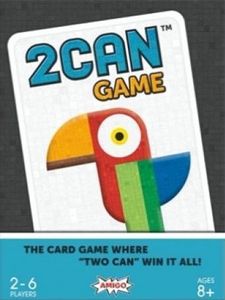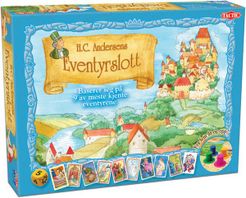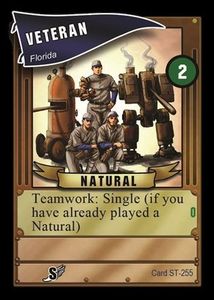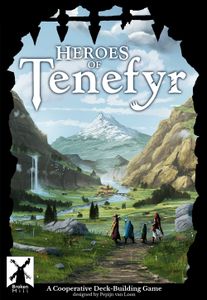|
Advertisement
|
Indian Knaves

DescriptionRules for two players: Use one deck of normal face cards. Remove the jokers. No table talk. Trick-taking game like rook, but number of cards won matters rather than certain cards having points. One player is the dealer. The other player is the trump caller. The dealer shuffles the deck and the other player cuts the deck. The dealer deals 5 cards in a row face down to the trump caller. The trump caller looks at their cards privately and chooses a trump suit based on just those 5 cards. Once trump is called, the dealer then deals 5 cards face down to himself. (The 5 cards dealt to each player will be part of their hand.) The dealer then deals 8 face down cards in front of each player that nobody can look at. The dealer then deals 8 face up cards on top of the face down cards that everyone can see. (One face up card on top of each face down card.) The dealer then deals 3 cards in a row to the trump caller's hand, then 3 cards in a row into his own hand. The dealer then deals 2 cards in a row to the trump caller's hand, then 2 cards in a row into his own hand. There should now be: The trump caller starts the game by choosing a card from either their hand or from the face up cards in front of them. The other player then plays a card and must follow suit. Highest card number wins. Aces are high. If they cannot follow suit because they don't have that suit either in their hand or face up on the table, they can play anything they want. Trump cards will take the trick in that case and other suits (non-trump and not following suit) lose - just like in Rook. Whenever a face up card is played, the face down card below it must immediately be turned over and it becomes part of the cards that can be played in subsequent tricks. Whoever takes that trick keeps those cards and puts them aside and then leads the next trick. The round ends when all cards in hands, face up, and face down have been played and all tricks taken. The winner is the player that got the most tricks (most cards). In the case of a tie, the dealer wins since the trump caller has a slight advantage and must take more than half of the cards to win. To play another round, swap who is dealer and trump caller between each round played. Choose a number of rounds to be won to win the overall game. Strategy ideas The game is similar to Rook, but it splits your hand into three parts: One example of using this knowledge is that if a player doesn't follow suit and plays a face up card which then reveals a face down card that is the suit that was just led, then you know that's the only card of that suit they have and so they must play it if you lead that suit again. There are many other strategies like this that can be used based on the global knowledge of face up cards. Four players The game could be modified for four players by using two decks and having the trump caller be the person to the left of the dealer and moving the dealer to the left each round. Notice that there will be two of each card in such a game. Three players Just like four players but you could either use one deck and reduce the number of hand cards, face down cards, and face up cards or use two decks and increase the number of cards used for each player. Other notes This is a combination of two games: one is a game from India who played it with his grandmother, the other is knaves. It's apparently similar to the ancient card game "Whist", which is where the card game "Bridge" apparently came from and Rook is also similar in some ways. We've actually played a three-player variant of Rook making the fourth dummy hand split as face down and face up and the dummy's partner plays from the face up cards - kind of like bridge but with face down cards hidden. —description from the designer Game DiscussionsAdd CommentYou need to be logged in to comment. Insert Bullet List Please enter at least one item. Item: Item: Item: Item: Item: Insert Numeric List Please enter at least one item. Item: Item: Item: Item: Item: Insert Link Please enter the link of the website Optionally you can add display text Insert Email Please enter the email address Optionally add any display text Insert Image Please enter the link of the image Insert YouTube Video Please enter the link of the video MarketplaceNo listings at the moment. Do you own this game? Click here to list it for sale.
Similar Games
|
Best Sellers
Board Games
|
||||||||||||||
Latest Searches: brass birmingham | super dungeon explore forgotten king | snap | Singing | new jersey | Ios | pictionary en español | Galaxy trucker | build a better burger | based | dream heist | Fresno monopoly | pathfinder skull | peanut panic pieces | googlie+eyes | wolf | The dukes of hazzard | Mage Knight Board Game Krang Character Expansion | san+diego | Guardians Chronicles 2 | empire builder board | hometown monopoly | Monopoly Devon edition | krosmaster | operation game replacement parts | Espanolaopoly | Monopoly junior | hero quest elf | Witch house | q bits
All Rights Reserved











Comments (0)